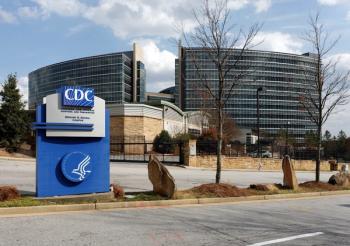
- Medical Economics August 2023
- Volume 100
- Issue 8
How the current state of the health care system is driving patients — and physicians — to concierge medicine
Many physicians are transitioning to concierge medicine to meet increasing patient demand for better choices in their care.
Many physicians are transitioning to concierge medicine to meet increasing patient demand for better choices in their care. And while transitioning a practice completely to concierge is may be a good option, there are innovative alternatives that give both physicians and patients the opportunity to have the relationship they always wanted. Medical Economics sat down with Mark Murrison, CEO of SignatureMD, to learn more about these options. The transcript below was edited for length and clarity.
Medical Economics: How would you describe the current state of the health care system and its impact on both physician and patient demand for concierge medicine?
Mark Murrison: I'll start on the patient side. Health care is really one of the few industries I can think of where the patient may be the last consideration in some cases. We all may have felt like we're kind of a nuisance or an inconvenience when we're engaging the health care system. From a business standpoint, I think businesses should do a few things — the product or service they provide should be simple, it should be easy, it should be convenient, it should provide great value, and it should deliver a great experience and be highly effective. If I look at that standard and compare it to health care today, I don't think health care is doing a really good job of meeting many of those needs. I have heard people talk about going through the health care system, going from doctor to doctor, and getting visits in 15-minute increments, and a lot of paperwork. It just becomes an experience that most people don't consider pleasant. So I think there's a real opportunity for us to do a lot better.
Medical Economics: How has the health care system over the years changed the relationship between a physician and the patient?
Mark Murrison: My grandfather was a quintessential country doctor, and he was focused on his patients and their needs. And my dad, also a physician, had this large professional and social network he could lean upon. The thing I see from that lens is that health care has moved from the practice of medicine to the transaction of medicine, the business of medicine. Today when you go to a doctor's office, they almost have to be businessmen or businesswomen first and doctors second, because there's such a burden on them from a compliance standpoint and from a reimbursement perspective This time takes away from their ability to spend more time with their patients. The reality is that doctors didn't go to medical school to be businesspeople or be administrators, that's not necessarily their gift. They went there to be able to take great care of people and to make a difference in their lives.
Medical Economics
All this has led to greater interest in concierge care. So let’s define the term. How do you define concierge care?
Mark Murrison
Concierge medicine is a membership-based model; people are choosing to invest their dollars to be able to have a different type of relationship with a doctor that might not exist today. As I mentioned earlier, care today is in 15-minute increments. For a lot of people, that's just not enough time to tell their story and get to a point where they feel like their needs are being heard, and for the doctor to have time to get to a good diagnosis, and a treatment plan in place. I really think this membership based model opens up the possibility for the patient to have more time with a doctor, for the doctor to practice more careful medicine, and to get to know the patient on a personal level, the concierge model really allows us to do that because the doctor is seeing fewer patients, they may go from a panel of 2,000 patients down to 300 to 500 patients, and that provides the opportunity to create the space and the time the doctors need to be able to provide just a different level of care.
Medical Economics: Do physicians need to go “full concierge”, or are their other versions?
Mark Murrison: There are a few models. Like any business over time, there are innovations that happen to the traditional model, or what we call a full concierge practice. That's where a doctor decides that they want to have all their patients be part of a concierge practice. And so they will limit their practice, and everybody within that practice is a member of that concierge program. SignatureMD since its inception in 2007 has offered both the full concierge model but also pioneered a concept called segmented concierge. That allows the doctor to introduce the service line of concierge medicine into their practice but doesn't require the patients to make a choice to join the practice or leave the practice. The way this segmented model works is the doctor makes the concierge program available to everyone in his practice. It's important for people to know that concierge medicine is a choice; it provides options for people to make decisions about the type of care they want to receive. In the segmented model the patients have a choice to join or stay within the practice in a traditional fee for service model. The doctor will exclusively see the concierge members on an as-needed basis. But a lot of the traditional, fee for service care is now being delivered through nurse practitioners or physician assistants. The beauty of the segmented model is it gives physicians the choice whether to go all-in with concierge medicine or offer it as another line of service within the practice.
Medical Economics: One common worry we’ve heard from physicians interested in the concierge model is anxiety about making the leap, especially wondering whether their patients will stay with them. What do you say to them?
Mark Murrison: Probably the most important question the doctor can ask is, ‘will this work for my practice?’ Over the years at SignatureMD we've perfected a model to be able to look at a practice and determine what the interest in concierge medicine may be; we have a lot of proprietary data that's available. So we can build profiles on different practices. What that allows us to do is create a profile of the types of people who are more likely to join versus those that are less likely to join. And so when we go in and we look at a practice, we're able to look at that practice makeup and give them a fairly accurate projection about how many people in their practice we expect are interested and would sign up for concierge.
The important thing is that doctors really have one shot at transitioning from a traditional fee for service practice to concierge medicine. You want to make sure that you do it right. I've seen situations where the doctor is excited, but the patient demand just simply isn't there. So that analysis piece is critical.
Medical Economics: From a physician's perspective, what are some of the key benefits of transitioning to a concierge model?
Mark Murrison: At a high level, I think that primary care doctors today are dealing with a lot of burnout. They are overworked and overloaded, and they can't keep that pace up. And so they're looking for some other way to practice. Also, you're seeing a steady decline in reimbursements for doctors, which means that because reimbursements are going down, you must work harder next year to make the same amount you did this year, and the only way you can work harder is to see more patients. It puts pressure on the doctor, and the patients can sense that tension. The concierge model really allows the doctor to be able to slow down. Doctors have described it as being able to practice medicine the way I was taught in medical school, or providing the type of care that drove me into medicine to begin with.
Medical Economics: What about the patient side of things?
Mark Murrison: The telling detail is we typically see more than 90% of the patients renew their membership every year. When they decide to do that and make an investment in their own care and sign up for the membership again, it means they see value in the service they received. I think that speaks for itself.
Medical Economics: What about physicians who may want to transition their practice on their own? What considerations go into that?
Mark Murrison: It comes down to explaining to people the benefits of joining the program and understanding how you connect with people and talk to them in a way that makes them interested in the program. There's an art and a science to that. We've transitioned hundreds and hundreds of practices and have perfected the ability to engage patients and talk about the benefits and the value. It takes that burden off the doctor. Since you only get one chance to do this, it's a big risk to take, so there's real benefit for people to work with somebody who knows how to do that.
Also, the transition is just the first part of the journey — then there's the ongoing delivery of service. The doctors would have to take on the marketing of the program, because even though you have 90% renewal every year, you're seeing an attrition of 10% of the members every year. It doesn't seem like much, but over three, four or five years, you can see a turnover of half your practice, and you need to have the ability to bring new people in, to not just maintain, but to continue to grow the practice.
Articles in this issue
over 2 years ago
Solutions to common physician practice challengesover 2 years ago
How to prepare your practice for a merger or acquisitionover 2 years ago
What’s happening with physician malpractice insurance rates?over 2 years ago
Pathways to concierge medicineNewsletter
Stay informed and empowered with Medical Economics enewsletter, delivering expert insights, financial strategies, practice management tips and technology trends — tailored for today’s physicians.















